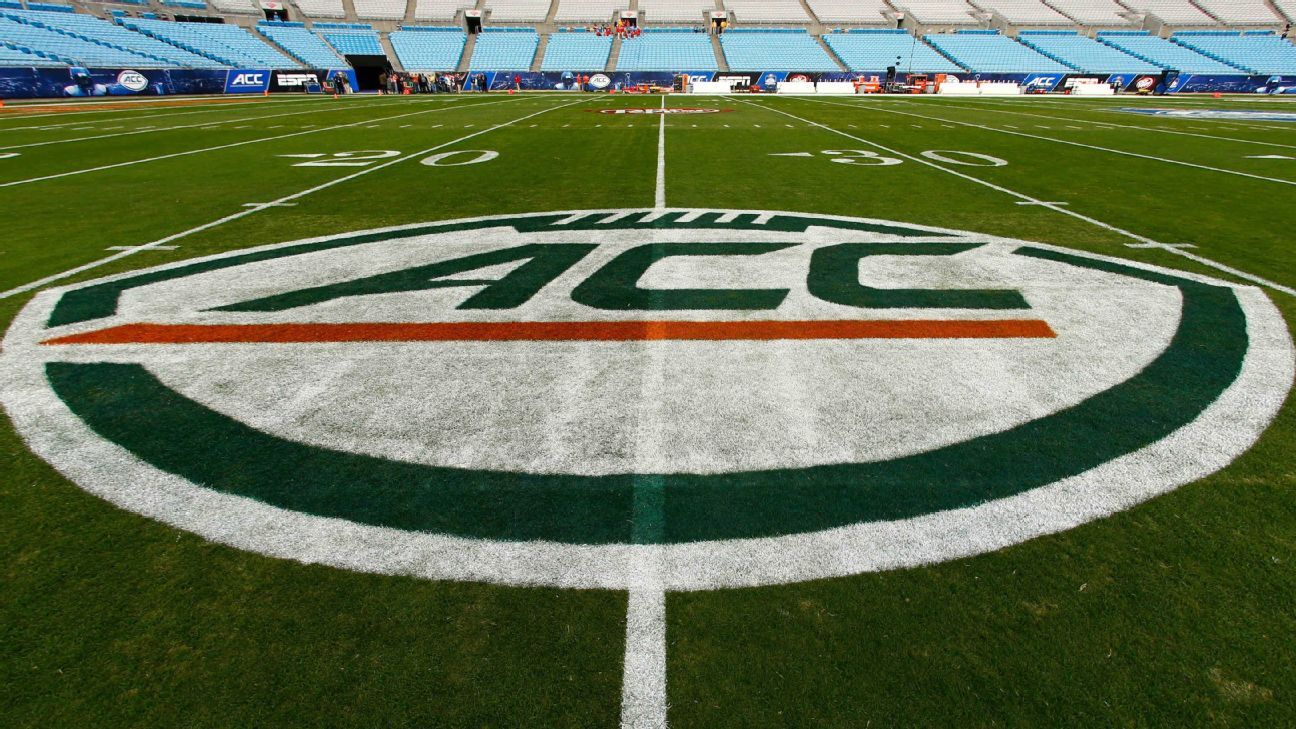The Atlantic Coast Conference is expanding from its Eastern roots.
The ACC presidents and chancellors met on Friday morning and voted to add three new schools — Stanford, Cal and SMU, sources told ESPN. It will bring the league to 18 members, 17 of which will play football full time in the league. The additions will be in all sports and will begin in the 2024-25 school year.
The moves have been the subject of much drama the last month, as Commissioner Jim Phillips worked diligently to appease a group of schools eager to add the schools and others seeking more revenue. The protracted process ultimately ended with the ACC growing amid a backdrop that brought to light some of the fundamental tensions within the league.
The move unfolded in an atypical process, as typically votes in league matters are cast as unanimous and a formality when the presidents meet to decide. The ACC needed 12 of 15 votes. Heading into the meeting on Friday morning it was uncertain whether or not the league had votes, a significant variance from how conference expansion typically works.
In a straw poll more than three weeks ago, four ACC schools dissented — Clemson, Florida State North Carolina and N.C. State. One of them needed to flip if the vote was to pass, and all eyes entered the meeting on N.C. State Chancellor Randy Woodson.
The focus on Woodson intensified on Thursday night when members of the University of North Carolina’s Board of Trustees issued a statement to voice their objection to the additions. That move was perceived around the ACC as a political statement to be sure that UNC Chancellor Kevin Guskiewicz didn’t flip his vote.
UNC and N.C. State did not need to be tied together, but some of the uncertainty around Woodson’s vote came from the political ramifications of not being aligned with North Carolina.
The ACC joins the ranks of a rapidly changing collegiate landscape, as starting next year the Big 10 will have 18 teams and the Big 12 and SEC will have 16 teams. The move leaves the Pac-12 with just two remaining programs, Washington State and Oregon State, a continued spiral that’s included the league losing eight teams since late July.
Cal, Stanford and SMU will come at a significant discount, which will help create a revenue pool to be shared among ACC members. SMU is expected to come in for seven years with no broadcast media revenue and both Cal and Stanford were expected to receive 30-percent shares of ACC payouts.
That money being withheld is expected to create an annual pot of revenue between $55 and $60 million. Some of the revenue will be divided up proportionally among the 14 full-time members and Notre Dame, while another portion will be put in a pool designated for success initiatives that rewards programs that win.
The move delivers a life preserver to the athletic departments at Stanford and Cal, which were left twisting amid the Pac-12’s implosion. Stanford has an athletic department that’s considered the gold standard in college athletics. Both will face significantly increased travel costs, which will significantly impact a Cal athletic department that faces hundreds of millions in debt.
For SMU, the decision to forgo television revenue gave them a seat in a major conference, as the school will lean on its wealthy boosters to help them stay afloat until revenue comes in. It marks a significant moment for the school’s climb back from the death penalty for major infractions that led to the school not playing football in 1987 and 1988. SMU didn’t return to a bowl until 2009 after the penalties.
Even with the vote going through, the nearly month-long saga to decide on the addition illuminated the divisions in the ACC. Both Florida State and Clemson have spoken publicly about how the revenue gap between the ACC and the Big Ten and SEC needs to close.
While those schools had not been supportive of the additions heading into the final meeting, the decision does give them access to millions more in annual revenue if they succeed on the field. With the ACC television contract running through 2036, the past few weeks have highlighted the uncertainty that will linger into the upcoming years.
Florida State officials have been particularly vocal about leaving the league, with president Richard McCullough saying the Seminoles would “very seriously” consider leaving the league if the revenue distribution model didn’t change significantly. This move by the ACC does not appear to change that tenor.
For other schools in the ACC, the three new schools represent both the addition of quality academic institutions and safety in numbers. Cal and Stanford were the last major conference schools that offered significant value left on the board.
